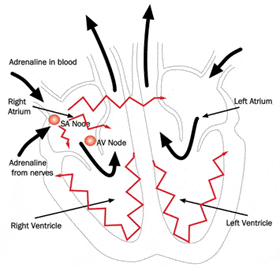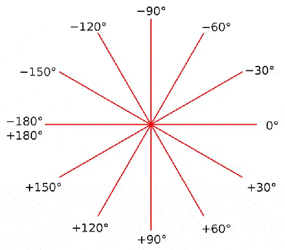CRY Research Fellow, Dr Sabiha Gati, had the article ‘Should axis deviation or atrial enlargement be categorised as abnormal in young athletes? The athlete’s electrocardiogram: time for re-appraisal of markers of pathology.’ published in the European Heart Journal (September 2013). [Abstract here]
CRY Communications Officer, Mair Shepherd, caught up with her to find out more about the research behind this article.

The European Society of Cardiology (ESC) produce guidelines of what they call ‘normal’ and what they call ‘abnormal’ for ECG interpretation. When we do our CRY screenings, where we’re assessing athletes and the general population, I look at the ECGs and assess the ECG to see what’s ‘normal’ which we can clear and what is ‘abnormal’ and requires further assessment.
Through our involvement with CRY, we have screened several thousand athletes and normal (non-athletic) individuals and not identified any structural problems of the heart. Based on our experience with the screening program, we feel that there are certain criteria that are regarded abnormal by the ESC which don’t actually need further assessment. These are the axis deviation alone and atrial enlargement alone. These are part of ‘Group 2 ESC abnormalities’.
What are ‘Group 2 abnormalities’?
The ESC have published Group 1 changes which are regarded as normal and related to exercise training changes; and Group 2 changes which are not related to the number of hours you exercise and are suggestive of structural or cardiac abnormalities.
What changes were you looking at?
Left axis deviation and atrial enlargement.
What does axis deviation show?
You can have a normal axis, you can have a left axis or you can have a right axis. When you have a left or right axis on the ECG it would suggest, based on the ESC criteria, that the individual could have a structural fault and be indicative of an inherited heart muscle condition.
What does atrial enlargement show?
Left and right atrial enlargement on the ECG could also suggest an inherited heart muscle condition or a structural problem with the valves.
What did your findings show?
Based on our experience we felt that left axis deviation and atrial enlargement don’t need further tests. We went on to look at 2,500 athletes and compared them to just under 10,000 controls based on our CRY screenings of the general population. We found that 5.5% of athletes show these changes on their ECG compared to 4.5% of the control population. We performed ECHOs on all of these individuals – an ultrasound scan of their heart – and we found none of the individuals in the athletic population nor the control population showing any structural abnormalities or features suggestive of an inherited heart muscle condition.
We’ve also looked at a population of asymptomatic individuals – those without symptoms – with hypertrophic cardiomyoapthy (HCM). We assessed 140 individuals and we found only 1.4% of individuals had these findings – left axis deviation or atrial enlargement. You would have to screen 35,000 individuals to identify one person with HCM which tells me that this is not a cost effective process of screening individuals. We feel that axis deviation and atrial enlargement should be excluded from further assessment in order to make our CRY screenings more cost effective, to improve the specificity of cardiac screenings and reduce the false positives from what is currently 10-16% to less than 8%.
A false positive is where someone is wrongly told they may have a condition?
Yes, so with the false positive, you identify a left axis deviation or atrial enlargement on the ECG (so you test positive) but you don’t have an abnormality – that is, you test positive on your ECG but your echocardiogram shows no abnormality.
What is the benefit of these findings?
If you exclude left axis deviation and atrial enlargement from the current ESC criteria you not only reduce the false positive rates – which is good as you would be causing less anxiety – but you’d be making screenings more cost effective by improving specificity without compromising sensitivity on ECG screenings.







